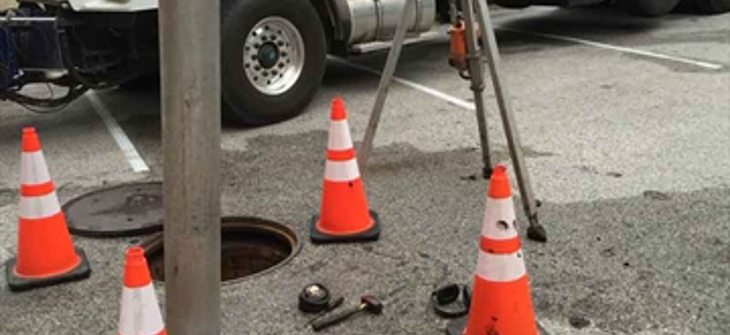
Maintenance Resiliency of Stormwater Treatment Facilities
Building Stormwater Systems That Withstand Maintenance Challenges
With the passage of time and the placement of stormwater treatment facilities into service in urbanized areas, it’s been possible to observe how these facilities age. All too often, the majority of effort and focus is placed upon the design and construction of stormwater treatment facilities, which are often neglected or forgotten once construction is complete. The property owner, in all cases, is left responsible for the consequences of decisions made by many others during the design and construction phases, nearly all of whom have moved on to new projects once the property owner becomes fully aware of the situation. Depending on circumstances, this often results in deferred (if not nonexistent) maintenance of these facilities, which only worsens with time as the facilities age and accumulate collected pollutants with each passing year.
So how do you plan for the likely (if not inevitable?) maintenance needed for facilities intended to collect and retain pollution in urban runoff? Simply put, it will depend on (a) the type of facility providing water quality control and (b) the type and level of pollutants present in the runoff from the drainage to the treatment facility. Surface facilities such as bioretention that utilize vegetation work well with relatively clean runoff and on sites where the underlying geology allows for prolonged infiltration of excess runoff into the ground. These facilities also work well to directly intercept rainfall only (like a green roof) as an alternative to unnecessary hardscape or lawn cover. If the runoff is relatively dirty and/or the soils do not facilitate infiltration, extensive maintenance will be necessary to remove accumulated pollutants and maintain the health of the vegetation and the ability of the system to drain. If the maintenance is deferred (which is often the case), the entire surface facility will likely need partial or complete replacement after a few years, which is typically very costly. Vegetation death due to lack of water in dry geographies (mitigated only by facility irrigation) is also a concideration.
Most urban environments, in particular roads, parking lots, and building rooftops, generate runoff with relatively high levels of suspended sediments, hydrocarbons, and other pollutants that can accumulate quickly in the treatment facility. As such, most surface facilities placed in ultra-urban environments, with the exception (perhaps) of those treating runoff from pedestrian hardscapes (sidewalks), perform poorly without extensive seasonal preventative maintenance and have limited benefit (given the cost) without the compliment of infiltration onsite. Without disciplined and extensive preventative maintenance, the result is unpredictable and very costly restoration and replacement of the vegetation, mulch cover, soil, and drainage piping once failure has occurred.
Underground treatment facilities, typically constructed of durable materials such as concrete, steel, and reinforced plastic, can be very practical in applications where heavily polluted runoff and/or poorly infiltrating or contaminated soils are present. These conditions are the normin many urban environmenta; in particular, the many “post-industrial” cities found in the East and Midwest.
The photograph above is of an underground proprietary media filter that was put into service in 2004 on a private site in a downtown/city area in Maryland and left untouched until June of 2016. The property is a multistory building, a small paved driveway and loading dock, and sidewalks.
There were multiple reasons why maintenance had not been performed; changes in property ownership, lack of city inspection staff, etc.). Regardless, the maintenance contractor hired by the owner was able to remove a dozen years of accumulated sediment, oil, and urban runoff residue, replace the filter modules, and restore the system to good-as-new function in a just a few hours and for a relatively low cost. Something that would not be possible will a land based system.
Under the circumstances, the property owner appreciated that the facility makes up for what it lacks in form (two manhole covers in the pavement) and accessibility with what it offers in endurance and ease of restoration. The owner will now have the maintenance contractor perform the cleaning service every three years - a very predictable schedule and predictable cost.
All things have their place. There is never a silver bullet, or a one size fits all approached, especially in stormwater management. Location matters. Vegetated facilities can both work well and deliver the aesthetic and environmental benefits of greenery, but the site conditions and maintenance resources need to be present, or the system may not last for the long term. Technology, including underground treatment devices, has its place here, and can be brought to bear in conjunction with landscape features to manage the polluted runoff for the life of the site.
